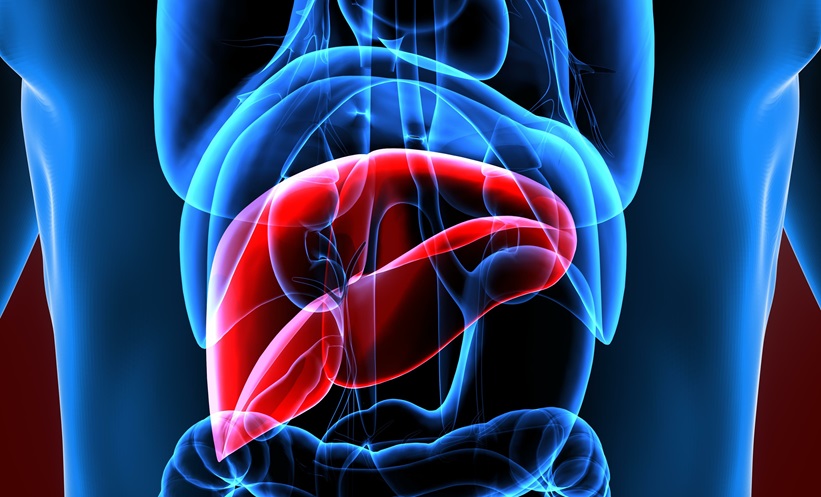Author: Rachel Donnison, Editorial Assistant, EMJ
Citation: EMJ Hepatol. 2020;8[Suppl 2]:23-25.
IN THIS YEAR’S European Association for the Study of the Liver (EASL) Digital International Liver Congress (ILC) 2020, the session ‘COVID-19 and the Liver’ covered the essential information hepatologists need to know about the novel virus. Opening the session, Prof Sandra Ciesek gave the audience a background on the facts and figures of coronavirus disease (COVID-19). Coronaviruses were first identified in the 1960s, and before 2019 there were only six members of the viral family that were known to cause disease in humans. Four of these six known coronaviruses are responsible for 10–30% of all respiratory infection in adults, which results in the common cold. Though COVID-19 is well known for causing respiratory pathology, it can also result in several extrapulmonary manifestations, including hepatocellular injury.
RISK FACTORS FOR SEVERE COVID-19
Dr Johannes Hov, University of Oslo and Oslo University Hospital, Oslo, Norway, presented the known risk factors for severe COVID-19, which include hypertension, cardiovascular disease, obesity, and an immunocompromised state. He went on to analyse the data on pre-existing liver disease, a rarely mentioned factor in studies on comorbidities and risk factors for severe disease. Patients with chronic liver disease (CLD) had an increased risk of mortality from COVID-19 as reported by The UK OpenSAFELY National Health Service (NHS) study; however, this only totalled to 2% of deaths from CLD in the total study population.
There is conflicting evidence from several studies regarding smoking; while some studies have claimed it may play a protective role, a recent systematic review has declared smoking as a risk factor for severe disease and mortality.
When discussing genetic factors, Dr Hov described the genome-wide association study he was involved in, which utilised single-nucleotide polymorphism comparisons between patients and healthy controls. The study compared patients with COVID-19 and respiratory failure to population controls using a Manhattan plot. Results demonstrated two distinct visible statistical associations: one at chromosome 9 and one at chromosome 3, though the strongest association was for the latter. The genetic variant identified at chromosome 3 was associated with respiratory failure in COVID-19, with an odds ratio of 1.77. There are at least six genes linked to the variant, including an immune-response gene and a gene linked to viral entry, but Dr Hov stated: “Genetically, it is impossible to define which of the genes is the culprit.”
The chromosome 9 findings were also of interest; blood group A appeared to be associated with increased risk of COVID-19 respiratory failure and blood group O was associated with a protective role. These data are supported by data from the UK BioBank, but Dr Hov was cautious, and believed more data from larger studies are required to be able to draw conclusions.
COVID-19 AND CHRONIC LIVER DISEASE
Dr Thomas Marjot, University of Oxford, Oxford, UK then went on to explain the COVID-Hep and SECURE-cirrhosis registries and subsequent analyses. The online reporting registries are supported by EASL and the University of North Carolina, Chapel Hill, North Carolina, USA, respectively, and facilitate online submission of non-identifiable data with laboratory-proven COVID-19 and pre-existing CLD or individuals who are post-liver transplantation. A total of 1,000 cases from 35 countries were submitted to the registries from their initiation on the 25th March 2020 up until the 8th July 2020.
Eventually, after exclusions, 745 patients with COVID-19 and CLD remained, of which 359 had CLD without cirrhosis and 186 had cirrhosis. The most common causes of liver disease were nonalcoholic fatty liver disease (NAFLD), alcohol, and chronic viral hepatitis. Dr Marjot presented the major outcome according to liver disease stage: “With each liver disease stage there was a stepwise increase in rates of major adverse outcomes, including death.”
Looking at the cause of death of patients with cirrhosis, the overwhelming majority (71%) died of COVID-19 lung disease, followed by liver- (19%) and cardiac-related complications (5%). “The chances of recovery worsened as the patient moves through hospitalisation, intensive care unit admission, and need for invasive ventilation,” explained Dr Marjot. The diminishing chances of recovery were associated with heightened severity of baseline liver disease. For example, patients with Child–Pugh B cirrhosis who required invasive ventilation had a 26% chance of survival, which fell to 10% for those with Child–Pugh C cirrhosis.
Dr Marjot expressed his belief that these results “highlight the need for close monitoring of cirrhosis patients during the hospital stay, and this data may also help with escalation decisions in terms of providing treatment in the intensive care setting.”
Another finding from the analysis of the registries was that, when looking at case fatality by 10-year age groups, those with cirrhosis were dying of COVID-19 significantly younger. Within the patients with cirrhosis, 46% experienced acute hepatitis decompensation following diagnosis of COVID-19, of which 22% had no typical respiratory symptoms of COVID-19. Dr Marjot stressed the importance of this: “It emphasises the need for a very low threshold for viral testing in patients presenting with cirrhosis complications in the current era.”
COVID-19 AND LIVER TRANSPLANTATION
Solid organ transplantation activity trends during the COVID-19 outbreak in Europe and the USA were presented by Prof Ellie Barnes, University of Oxford, Oxford, UK. When considering the abrupt reduction in transplant activity observed in all countries, particularly Spain and Italy, in the month of April, Prof Barnes stated that: “There is a need to modify and develop a strategic plan to adapt transplantation programme activity and reduce the risk of transmission.”
Prof Barnes went on to clarify that the action plan will require donor and recipient screening, via the clinic and the laboratory, to minimise the risk of transmission; resource planning for blood supplies, hospital capacity, and staff; and a staged approach to transplant volume considerations to weigh up the risk–benefit, risk tolerance, hospital capacity, and degree of local transmission.
Understanding that this is an evolving situation, the infectious risk to the recipient, availability of resources, daily evaluation of risk–benefit, and patient prioritisation must all be considered by the physician. In areas where the virus is heavily circulating, Prof Barnes suggested that: “Despite the risk of negative consequences, temporary cessation of transplantation may be necessary.”
Prof Barnes then offered the current suggestions for modifying transplant programmes in instances where there is a 25% reduction in transplant activity, when elective cases could be pursued; urgent cases could be pursued when there is a 50% reduction in activity; and only emergency cases should be pursued in cases of 75% transplant activity reduction.
There are three pillars to minimising transmission of the virus during transplantation: epidemiological screening, clinical screening, and PCR testing of the donor and recipient. “If the donor or recipient are positive, we should not proceed with liver transplantation,” cautioned Prof Barnes. She continued: “If the donor is positive, we should discard the organ, and in the setting of live donor liver transplant, this should be delayed by 28 days.”
The discussion of a recent multicentre study on the incidence of COVID-19 in liver transplant patients led to two major conclusions: the standardised incidence ratio was significantly increased, suggesting the transplant population was at an increased risk of infection compared to the general population, and the standardised mortality ratio was similar between the two populations, signifying that disease severity was not worse in the transplant, immunosuppressed population.
Despite the apparent similar severity of disease among the populations, Prof Barnes also wanted to note that: “We may anticipate a more prolonged shedding of the virus in the immunosuppressed state, thus potentially increasing the risk of transmission to contacts including healthcare workers.” Interestingly, immunosuppression has been likened to a double-edged sword for patients with COVID-19, as it can beneficially reduce hyperinflammation on the one hand, but on the other it leads to deleterious impairment of antimicrobial immunity and can delay viral clearance.
Summarising the international guidelines and recommendations for liver transplantation, Prof Barnes concluded: “The vast majority of recommendations advise against reduction of immunosuppression, particularly in patients who are asymptomatic.”

![EMJ Hepatology [Supplement 2] ILC Congress Review 2020](https://www.emjreviews.com/wp-content/uploads/2020/10/EMJ-Hepatology-8-Suppl-2-Feature-Image-940x572.jpg)






